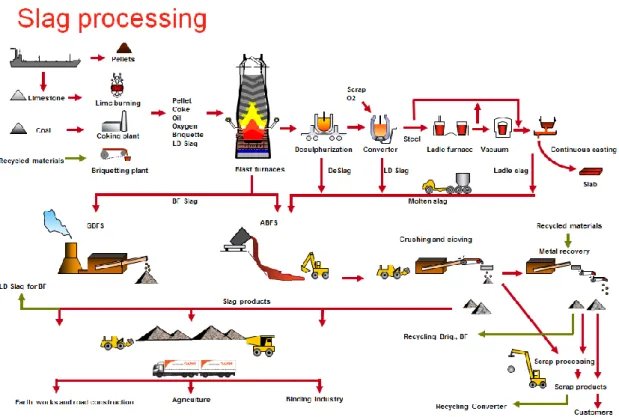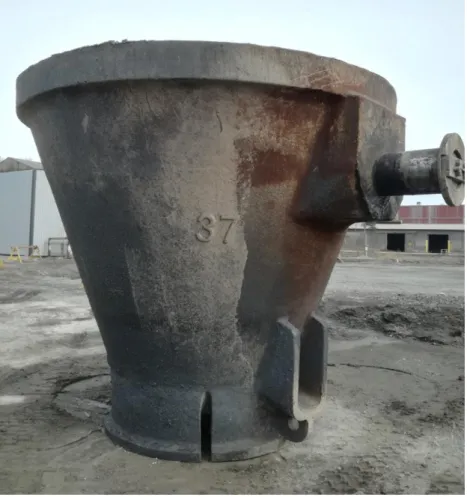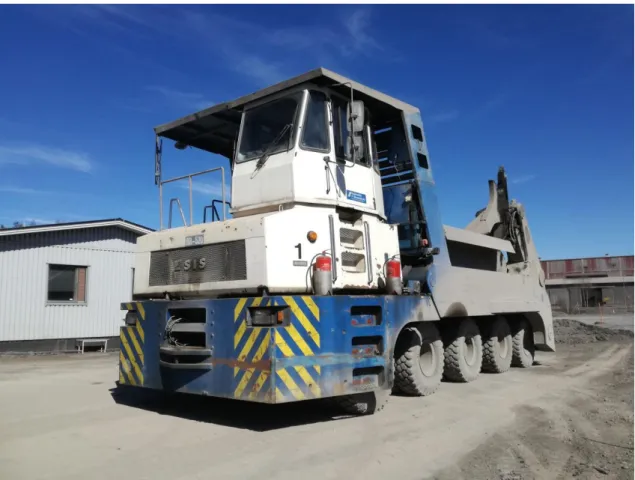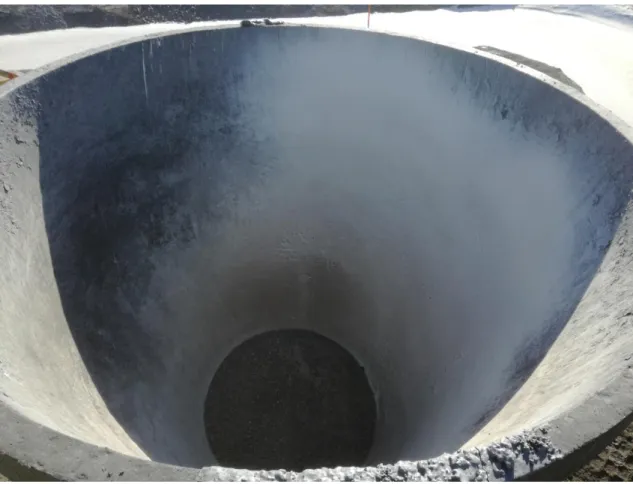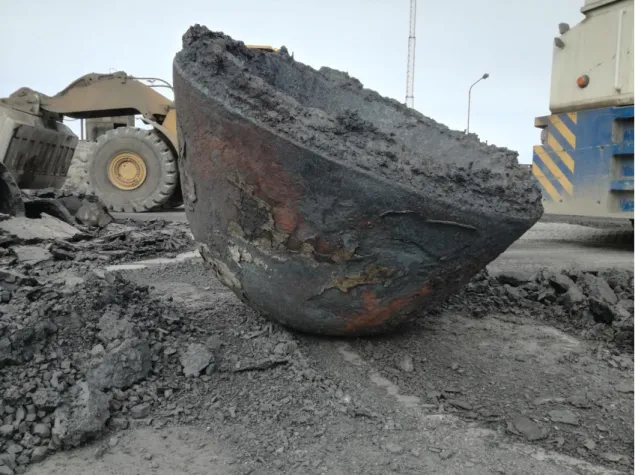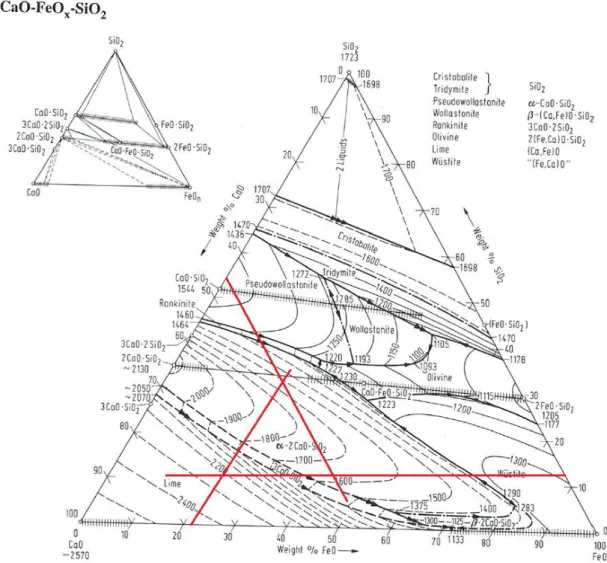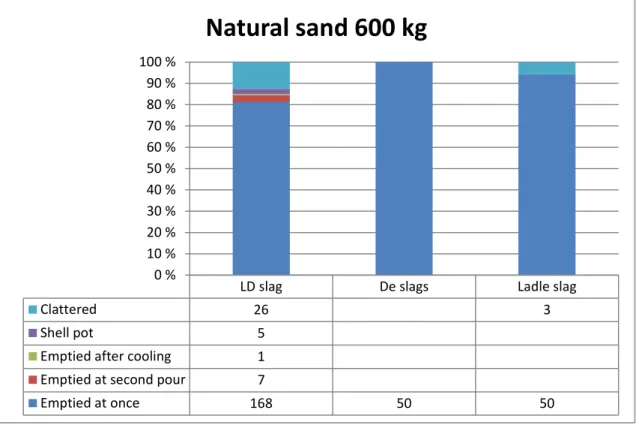LD slags also had problems with larger amounts of protective sand. The amount of protective sand in the LD slag containers may need to be increased.

3 STEEL SLAGS
Processing slags
Depending on the amount of slag, slag is tapped from one to three strokes to the LD slag pot. In addition, part of the slag is broken and sieved into the desired fractions in the crushing station.
Usage of slags
Part of the slag is passed through a metal recovery station where the magnetic part is separated by an electromagnet for future use. Due to the good load-bearing capacity and the heat-insulating property of the product, it is possible to build thinner beds than with the natural aggregates.
4 SLAG POTS
Sometimes the slag or metal in the slag has stuck to the walls of the pot and it needs to be rattled. When it is clattered, the potter turns the pot upside down to the ground and drops it to release the slag and metal.
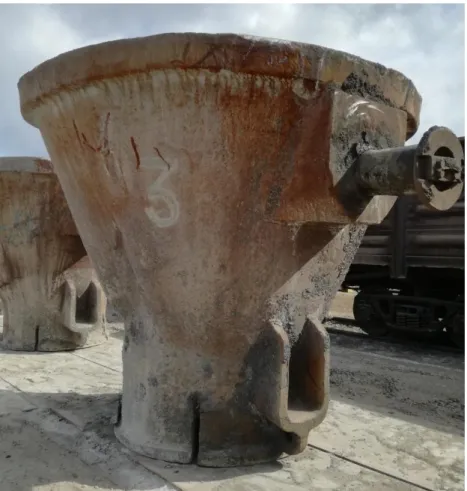
5 USAGE OF PROTECTIVE SAND
Sanding station
There is a gutter in the left corner, and a lime nozzle in the right. The amount of sand can also be adjusted by changing the strength of the vibrations. However, this is quite inaccurate and changing the amount of sand requires randomly adjusting the vibration and weighing the sand until the desired amount is achieved.
In the early 1990s, no protective sand was used in slag pots. Metal and slag stuck to the walls and bottom of the pots and they had to be repaired frequently. The material of the first protective sand was natural sand with a grain size of 3–6 mm.
There were problems with the new materials because the composition of the materials was not good and the sand contained too much clay. The LD slag was used until the summer of 2016 when the material was changed back to the natural sand due to increased demand from the blast furnaces. The value of the LD slag turned out to be higher in the blast furnace than in the pots.
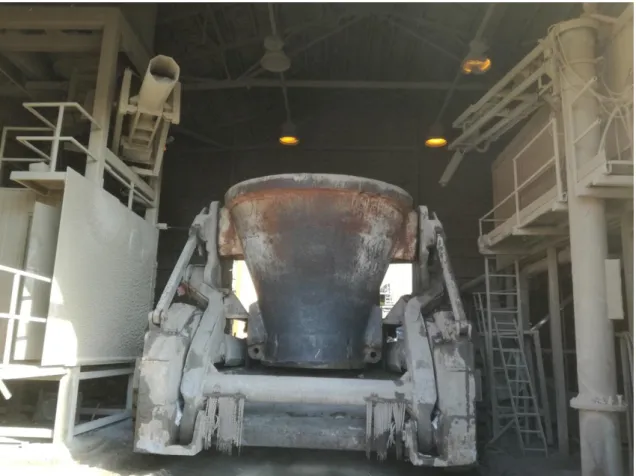
Testing ladle slag as protective sand
The idea of using protective sand came from an initiative taken by an operator. The new materials were a variety of slag and sand that had no use at the time and the costs were low. In conclusion, varnish slag was not an ideal protective material for LD slag pots.
In case the steel got into the pots, the protective sand would melt. Instead, it would be a good choice for slag scoop pots because of the ease of soaking and also because of the quality of the finished products. It was determined that the best solution for the protective sand would be to separately deposit the LD slag into the LD slag pots and the pot slag into the slag pots.
However, it was impossible to use two different protective sands because there was only one silo at the sanding station.
Usage of protective sand at other mills
- SSAB Luleå
- Global
About 150–200 kg of protective sand is fed into the slag pot of the smelter in Luleå (Virtala 2017). The absence of protective sand caused problems in emptying the slag. In the SSAB steel mill in Oxelösund, dried LD slag is used to protect pots.
About 2–3 m3 or 5–8 tons of LD slag is poured into the bottom of the pots. Previously, refractory paste was sprayed on the walls of slag pots, but this was abandoned in 2012 because the benefits were not significant. In the steel plant of the Magnitogorsk Metallurgical Combine, slag pots were sprayed with lime suspension to prolong their durability.
At the steel plant of the Taganrog Metallurgical Combine, slag pots were also sprayed with lime suspension. If there is moisture in the pot, the dried slag prevents or reduces the explosion of the slag and the reaction between the slag and the water. It is also instructed that the molten slag be poured directly into the center of the pot on top of the dried slag at the bottom.
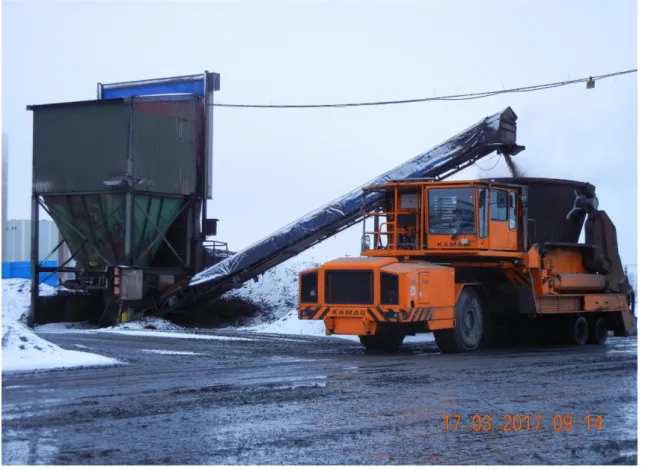
6 TESTS
Preparations
Adjustments for LD slag were made at the start of use of the material. With one exception, the weight for the first vibrator values was measured by feeding the part into the slag pot and taking the slag pot to the freight scale. The continuation of the testing periods was carried out by collecting forms filled out by slag truck drivers.
The settlement of the slag was evaluated by observing the immersion of the slag and interviewing the truck drivers.
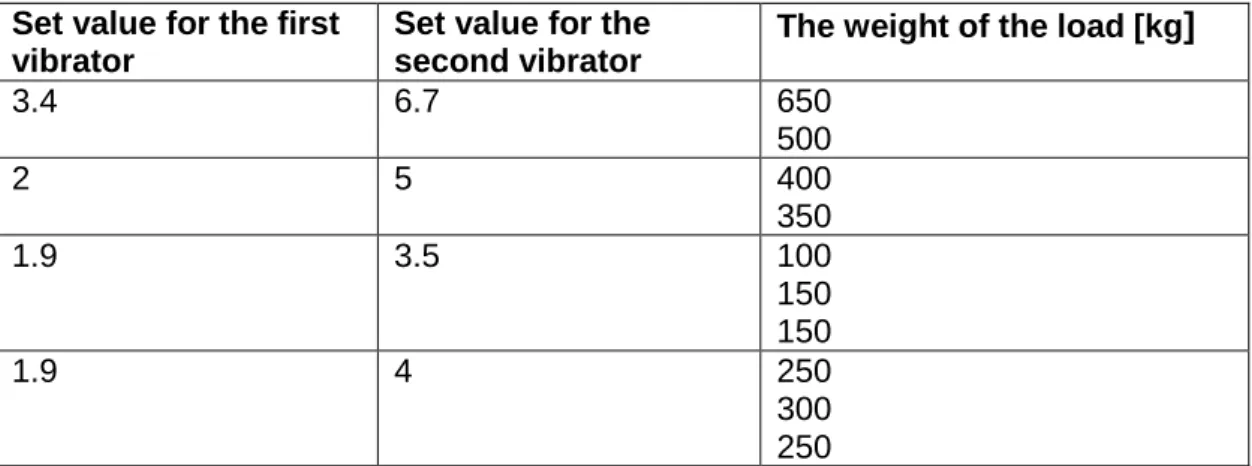
Natural sand
Since LD slag is mainly CaO, SiO2 and Fe, the melting point can be found in the phase diagram for CaO-FeOx-SiO2 slag shown in Figure 18. Fe had to be converted to iron oxide, giving a percentage of 22.5 for FeO. Due to the roughness of the material, it was necessary to add a small fraction of natural sand to make it easier to unload the material from the tanker truck into the silo of the sand station.
The coarse grain size also causes problems when the material is unloaded into the silo via a hose.
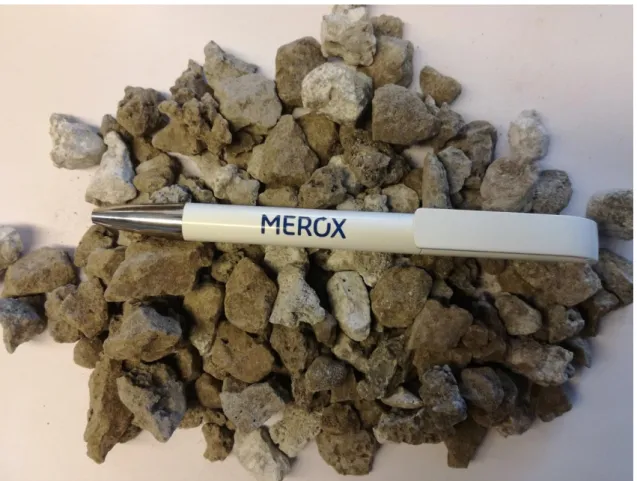
7 TEST RESULTS AND ANALYSIS
Natural sand 600 kg
Natural sand 400 kg
Natural sand 600 kg
This indicates that the protective sand was probably pushed aside when the slag was poured into the jar. However, the absence of the visible natural sand indicates that it has melted or mixed with the slag.
Natural sand 400 kg
LD slag 1000 kg
The results of the test period with 1000 kg of the LD slag are shown in figure 24.
LD slag 1000 kg
LD slag 600 kg
For the LD snail pots the success rate was not as good as only 67 percent emptied.
LD slag 600 kg
LD slag 400 kg
When comparing the images of the LD slag pots between the test period with 600 kg and 400 kg, the amount of visible protective sand is clearly greater in the tests for 400 kg.
LD slag 400 kg
Weighing during tests
Parts of the protective sand were weighed during the tests to verify the actual amount in the test periods. In the tests, two portions of the natural sand were weighed for 400 kg of natural sand. In the tests for 1000 kg LD slag, one portion of the protective sand was weighed.
The weighing was done with the slag pot wagon and the result was 1050 kg LD slag. During the tests, three portions of the protective sand were weighed for 600 kg of LD slag. Although the weight variation was expected, the 300kg difference was too much.
It should be noted that there could have been a lot of variation during the test period and that the results may not be accurate. Two portions of the protective sand were weighed during tests for 400 kg of LD slag. During the tests it was observed that the overall impression was that the amount of protective sand was much greater in than the test period for LD slag 600 kg.
Comparison
- LD slag pots
- Primary and secondary desulphurisation slag pots
- Ladle slag pots
A comparison between different materials and different quantities in the LD slag pots, made on the basis of the modified data, is shown in Figure 34. It is possible that this affected the amount of steel that entered the pots and thus affected the emptying of the pots. As already mentioned, there were no problems when emptying the pots, as all the pots were emptied with both materials and with all quantities.
As it appears, the cooling of desulfurization vessels has a significant positive impact on emptying. Since the quantity of pots that had to be struck is so small, it can be assumed that it was caused by the scattering that occurs during the process. However, the good success rate of all tests shows that the amount of protective sand can indeed be reduced.
The bottom of the blocks is flat, which means that the protective sand has remained in place. The comparison between the round bottom and the flat bottom of the pot slag is shown in Figure 39. Since there is a lot of steel in the pot slag containers and the temperature of the steel in the casting stage is about 1550 °C degrees, it is unlikely that the LD slag is melted.
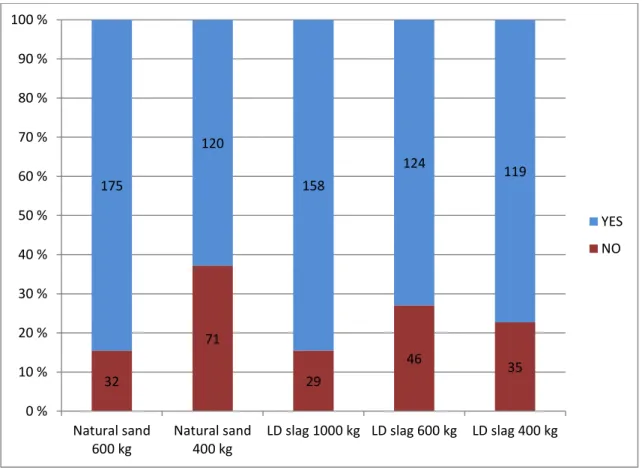
8 COSTS AND POSSIBLE SAVINGS
Savings when the amount of natural sand is reduced in desulfurization and slag pots. Savings when the amount of LD slag is reduced in desulfurization and slag pots.
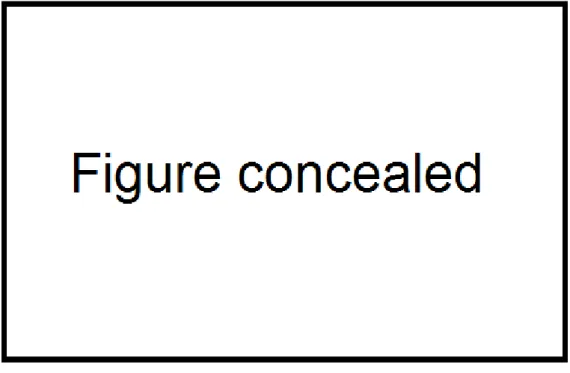
9 CONCLUSION
Consideration should be given to further increasing the amount of protective sand in LD slag pots. In tests for 600 kg, the amount of LD slag turned out to be considerably less than in tests for 400 kg. In both experiments a significantly large amount of the natural sand was observed between the LD slags.
Also, the poor condition of some LD slag containers may have skewed the results. In general, efforts should be made to minimize the amount of steel entering the slag pots in the smelter. Slag LD affects the quality of slag products used in agriculture.
However, the amount of LD slag in the slag products used as a liming agent is so small that it does not exceed the required limits. It should be investigated whether the lime suspension used in Raahe is important for emptying the slag pots. The functionality of the crushed rock as the protective sand should also be investigated.
LD slag pots comparison
